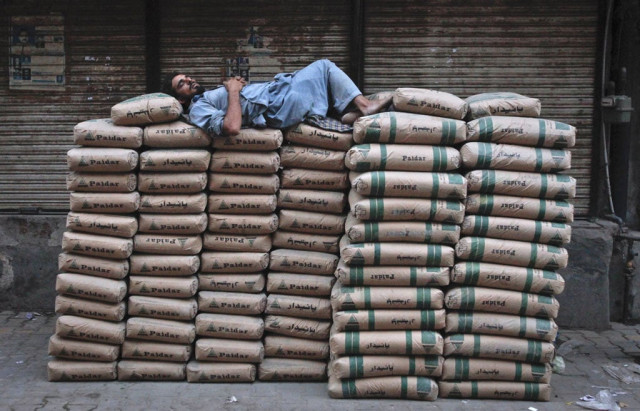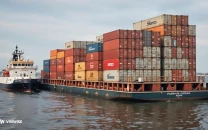Bringing to a close: Cement sector wraps up year with handsome gains
Lucky streak to continue on low input cost and high demand.

Rs510 to Rs530 per bag is the average cement price today, which are the highest ever. PHOTO: REUTERS/FILE
With the continuous rise in the profitability of cement companies, the industry’s prospects in coming months look bright, buoyed further by strong demand and high prices.
“Like last year, the cement sector has seen another great year because of low cost pressures, especially from imported coal, high cement prices and stable demand,” JS Global Capital analyst Atif Zafar told The Express Tribune.
Industry officials and analysts believe that the industry will remain on a path of profitability and growth due to stable cement demand in the country, expected growth in construction activities and exports to different markets.
Low coal prices
The sector, which heavily depends on imported coal, the main ingredient and a source of fuel in manufacturing constituting 50-60% of the production cost, saw stability in the year as average prices of coal stood at $81 per ton compared to the high of $145 per ton in June 2010.

Calendar year 2013 saw a sharp decline in international coal prices that dropped 15-18% since January due to low economic growth in China and India – the two major coal importers in the world.
Impact of high cement prices on profitability
One of the major reasons for the high growth in profitability of cement manufacturers is the rise in retail prices. Cement prices saw a continuous increase since March 2011 when average price of a 50kg bag stood at Rs400.
This was not the first time prices have hit highs. They had crossed this range in 2008 but later dropped to Rs250 per bag in September due to slow economic growth in the country. However, average cement prices today are hovering in the range of Rs510-530 per bag, which are the highest ever.
Cement makers say they had to raise prices because of a jump in the cost of production owing to high fuel rates, gas and electricity prices. The government sharply raised electricity rates for industrial customers in August this year.
When electricity and gas prices were increased, leading cement companies that are all part of the All Pakistan Cement Manufacturers Association (APCMA) saw differences develop in their camp. The body was able to settle the differences after August, leading to stability in their position on the Karachi Stock Exchange (KSE).
Performance at Karachi bourse
In line with their previous year’s performance, cement companies continued to retire their debts in 2013, allowing them to improve margins.
“Cement companies had another good year at the Karachi bourse,” said Zafar, adding the differences within APCMA on different issues like capacity expansion or market share did create a little bit of confusion for some time, otherwise the year was good for the industry.
According to Topline Securities, out of 19 cement companies listed on the KSE-100 index, 11 outperformed the benchmark index.
The cement sector is expected to give a return of over 75% in the calendar year ending December 31, 2013 compared to a return of over 50% by the benchmark KSE-100 Index, Topline Securities recently reported.
Published in The Express Tribune, December 31st, 2013.
Like Business on Facebook, follow @TribuneBiz on Twitter to stay informed and join in the conversation.



















COMMENTS
Comments are moderated and generally will be posted if they are on-topic and not abusive.
For more information, please see our Comments FAQ